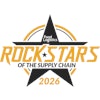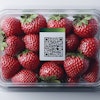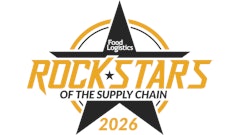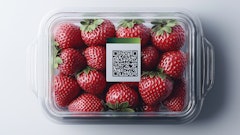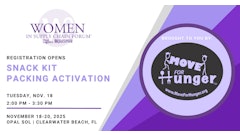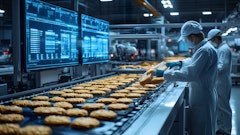Santa Clara, CA: Real-time temperature traceability (RT3) is the ability to measure and document a perishable product’s temperature and location on demand throughout the cold chain.
RT3 is important because, according to Peter Mehring, CEO of Intelleflex, “one of every six fruit and vegetable shipments in the U.S. is wasted annually due to temperature problems, causing losses exceeding $17 billion.”
Worldwide, one-third to one-half of food produced is lost, wasted, or discarded due to supply chain inefficiencies. Broad-based RT3 implementation will improve distribution efficiency, reduce waste, and maximize safety and quality of perishables. This benefits all stakeholders and minimizes the risk (and cost) of food-borne illness litigation.
What is required to implement RT3?
RT3 for perishable bulk shipments requires pallet-level temperature measurement; room- and trailer-level temperature data are too inaccurate to determine safety and freshness for many reasons. Although documenting proper temperatures in sealed cold storage rooms is relatively simple, undocumented temperature variations may occur during loading, unloading, or in-transit.
For example, temperatures may vary significantly, even in properly-refrigerated trailers, due to improper loading affecting air circulation. Environmental factors, like the sun shining on part of a cargo hold, can also play a substantial role.
Why are present systems inadequate to provide RT3?
Many high value perishables, such as strawberries, should be maintained at a specific temperature (such as 34°F)to maximize shelf life, and relatively short-duration (and difficult to measure) increases of just four degrees can decrease shelf life by three days.
However, until recently, detecting temperature variations within pallets of bulk shipments was labor-intensive and cost-prohibitive. The “first in, first out” sales model is simple, but according to Mehring, it does not account for temperature variations that affect product safety and quality during shipping and storage, and “average” temperature measurements based on just a few data points are insufficient to provide accurate, real-time safety and freshness data.
How can one effectively implement RT3 for perishables?
According to Mehring, a “first expiring, first out sales plan, based on pallet-level temperature measurement, maximizes product safety and quality.” RFID (radio frequency identification) tags that monitor temperature data can be inserted into individual pallets and “document consistent product temperature until time of delivery, protecting sellers, shippers, retailers, and consumers.”
Sellers can confirm products were properly shipped, and shippers can verify proper handling. Distributors and retailers can quickly determine which pallets should be rejected and accepted, and among the accepted, which to sell first to maximize safety and freshness while minimizing waste. Insurance carriers can more accurately adjust claims for spoiled goods, because they will be able to identify the party(ies) responsible for temperature abuse and quantify the portion of a shipment lost from spoilage. Consumers can buy the freshest and safest products available, minimizing the risks of food-borne illness and resulting litigation.
These “increased supply chain efficiencies” maximize product safety and quality. RT3 data help businesses determine how to safely maximize the utility of their perishable products. For example, if a product is being shipped three days to its destination incurs a temperature increase that reduces shelf life to two days, it will be delivered in unsalable condition, resulting in lost revenues and diminished brand value. RT3 allows the shipment to be diverted to a destination only one day away, maximizing product safety, shelf-life, and sales.
RT3 helps manage food recall risks
RT3 minimizes the risks of food recalls and product spoilage, because it can help identify temperature abuse before a problem occurs. This helps decision makers act quickly to prevent and isolate potential food safety problems. “The ability to measure temperature variations in real-time means all links in the cold chain will know they are accountable for handling products safely.”
If a recall is necessary, location and lot data recorded on Intelleflex RFID tags can help companies quickly isolate the product as soon as possible. (The FDA Food Safety Modernization Act will require food processing companies to trace products one step back to suppliers and one step forward to customers, so relevant parties may be promptly notified of a recall.) RT3 minimizes the time recalled food products might be offered for sale, reducing the risk of personal injury litigation and preserving brand value. Minimizing over-recalls of properly-stored products also reduces the cost of a recall.
Conclusion
New technologies that measure and document perishable product temperatures in real-time help all stakeholders maximize food safety, quality, and brand value while minimizing waste, distribution inefficiencies, and the risk of litigation.
--Kronenberg is an attorney with Murphy Pearson Bradley & Feeney in San Francisco and author of foodlawblog.com